C.M. Saunders's Blog, page 4
September 13, 2024
RetView #81 – The Mutations (1974)
Title: The Mutations
Year of Release: 1974
Director: Jack Cardiff
Length: 92 mins
Starring: Donald Pleasence, Tom Baker, Brad Harris, Julie Edge, Michael Dunn
Sometimes films, no matter how good they are, just get overlooked and then forgotten about, only to resurface decades later on some obscure satellite TV station, in this case Talking Pictures in the UK. In The Mutations (aka The Freakmaker), Donald Pleasence (What a Carve Up! Death Line, the first two Halloween films, and about a bazillion others) stars as mad scientist, Professor Nolter, who has taken it upon himself to pioneer what he sees as the next stage in human evolution by crossbreeding Venus flytraps with college students he abducts from his class (standard dialogue: “We are interested in cloning, not in clowning!”) his ultimate plan being to create a race of “plants that can walk, and men that can take root”. Seems reasonable enough, right? No problem there.

However, friends of the missing students start asking questions and obviously, science being what it is, the vast majority of Professor Nolter’s kooky experiments end in abject failure, leaving the crazed professor with a surplus of mutant human/plant hybrids which are handed over to a cruel circus freak show owner, Mr. Lynch (a barely-recognisable Baker, seen here shortly before his career-defining turn as Doctor Who) who attempts to exploit them for monetary gain which, as we all know, is the, ahem, root of all evil. Boom. This aspect calls to mind another classic Pleasence outing in Circus of Horrors (1960) though The Mutations is generally believed to have been directly inspired by Tod Browning’s classic Freaks (1932), which follows the exploits of a travelling French circus. And like that movie, it’s now frowned upon by modern standards because of the sometimes distasteful exploitation of actors with genuine disabilities who star alongside able-bodied actors with fictional disabilities, among the array of ‘freaks’ are the Pretzel Man, the Bearded Lady, the Monkey Woman, the Alligator-skinned Girl, and the Human Pincushion. Michael Dunn, a well-known American actor with dwarfism who played Lynch’s sidekick Burns, died at the Cadogan hotel in London at the age of 39 while the movie was in production. Other problematic scenes included the professor appearing to feed a live rabbit to a giant Venus flytrap. It seems people are cool with seeing scores of teenagers meet all kinds of inventive, grisly ends in the movies, but the moment you feed a rabbit to a Venus flytrap everyone loses their marbles. As you can probably guess, all this is bound to end in disaster. Good must triumph over evil. And the mutations, kitted out in shoddy costumes and grotesque make up, set out to wreak their revenge.
In much the same way as Tod Browning manages in Freaks (the parallels just keep coming), in the second half of the film the viewer is cajoled into feeling a measure of sympathy for the nutations who, from the outside looking in, would appear to be the monsters. These are the abused, the downtrodden, the disaffected, and the vulnerable, who wouldn’t even consider being evil if something evil hadn’t happened to them first, and you want them to find justice. This isn’t exactly a new mechanism, harking back to Mary Shelley’s Frankenstein and maybe even earlier, but is unusual none-the-less. Mr. Lynch, aka, ‘the ugliest man in the world’ is also a very complex character. Horribly disfigured, he yearns to be normal and refuses to take his place among the ‘freaks’ (“He’s one of us!”). At one point he goes to a prostitute and pays her extra to say ‘I love you.’ Aww.
The Mutations was directed by legendary British cinematographer Jack Cardiff (1914-2009) and released through Columbia pictures. Though filled with crackpot theories and pseudo-science, it raises all kind of moral and ethical questions, chief among them being how much should (or could) people interfere with nature? Is it selfish to attempt to guarantee the future survival of a species? Or is it necessary? Pleasence is wonderfully cast, though he does tend to resemble Pete Townshend a bit too much for my liking. Speaking of music, also worthy of note is the truly unsettling soundtrack by Basil Kirchin, which starts with something resembling a heartbeat in the opening credits, and twists and writhes throughout. The film has been released on DVD several times since 2005, most notably in 2008 by Subversive Cinema as a part of a 2-Disk ‘Greenhouse Gore’ movie pack with The Gardener (1974) about a deranged landscaper who turns into a tree.
Author and film critic Leonard Maltin criticised The Mutations’ ‘predictable’ story and what he called “grotesque elements” while the TV Guide awarded it one star out of five, saying, “Though at times the film is so bad it’s unintentionally funny, it has a certain cruelty to it.” Contemporary review site My Bloody Reviews notes, “more of a curiosity piece than essential viewing The Mutations is criminally dull and only comes to life whenever Tom Baker is on screen, otherwise this is rather pedestrian and questionable in its depiction of ‘freaks’”. Michael H. Price of the Fort Worth Star-Telegram, was slightly more impressed, giving it a solid three stars and praising both the effects and Kirchin’s “dissonant orchestral score” which he claims “adds mightily to the mood of unease and gathering madness.”
Trivia Corner
According to Tom Baker, while filming he and Willie Ingram, who played Popeye, so-called for his uncanny ability to make his eyes pop far out of their sockets, struck up an unlikely friendship. They used to frequent a pub, where a particular waitress made it clear that she didn’t approve of Baker, who was white, being friends with Ingram, who was black. To get back at her, Ingram would make his eyes pop out when she passed, then pretend nothing had happened.
September 5, 2024
Silent Mine – OUT NOW!
Men risk everything to journey across the West, seeking their fortune at Silent Mine. They don’t come back.
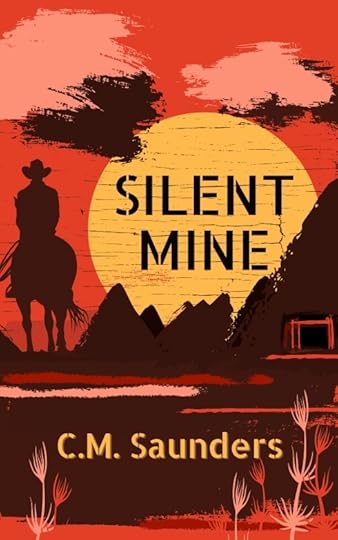
In 1879, Dylan Decker rides his trusty steed Skydance across California in pursuit one of those lost men, Thomas Winstanley, whose wife needs to know if she’s been jilted or widowed. In the process, Decker encounters a town full of locals who clam up every time the mine is mentioned, two cutthroat bandits with their own horror stories, and a group of natives who understand what truly lurks in the dark recesses of Silent Mine.
But none of them can deter Decker from keeping his promise to Mrs. Winstanley. He’ll solve the mystery, regardless of cost.
Silent Mine, my new horror western novella, is out now on Undertaker Books.
August 17, 2024
Cover Reveal – Silent Mine
I am pleased to reveal Rebecca Cuthbert’s amazing cover of my forthcoming horror western novella Silent Mine, the first adventure featuring a new character called Dylan Decker. I think it’s fair to say she captures the mood perfectly.

Men risk everything to journey across the West, seeking their fortune at Silent Mine. They don’t come back.
Silent Mine is released on Undertaker Books on 30 August 2024, and is available for pre-order now.
August 3, 2024
Brats (2024) (Review)
I grew up (mostly) in the eightires, so I was looking forward to this new release which promised to ‘explore the Brat Pack, a group of young actors who frequently appeared together in coming-of-age films, and the impact on their lives and careers.’ Sadly, I was disappointed. This is less an evaluation of the contribution the Brat Pack made to eighties pop culture and more a self-indulgent 90-minute poor-me rant by Andrew McCarthy about how being called a ‘brat’ forty-plus years ago hurt his feelings. It’s clear the guy has been stewing over it for decades, and he sets out here, in his role of writer/director, to prove once and for all, how hard he has it and how unfair everything is. I can’t think of anything more bratty.
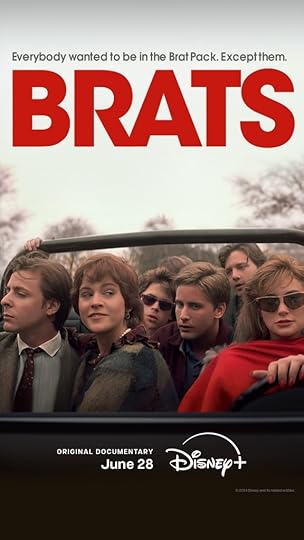
For those who don’t know, the ‘Brat Pack’ was a nickname given to a group of young actors and actresses who frequently appeared together in a succession of coming-of-age films, the most enduring of which are probably The Breakfast Club (1985), St Elmo’s Fire (1985), Pretty in Pink (1986) and About Last Night (1986). The films themselves have been described as representative of the “socially apathetic, cynical, money-possessed and ideologically barren eighties generation,” and focused primarily on middle-class teenage angst. They made use of adolescent archetypes like alienation, isolation, and sexual frustration, and, for some reason, were often set in the suburbs of Chicago. An appearance in one or both of The Breakfast Club or St Elmo’s Fire is often considered the prerequisite for being a core Brat Pack member which puts Emilio Estevez, Anthony Michael Hall, Rob Lowe, Demi Moore, Judd Nelson, Molly Ringwald, Ally Sheedy, and McCarthy himself firmly in the frame, though there are numerous peripherals including James Spader, Robert Downey Jr, Jon Cryer, Mathew Broderick, John Cusack, Mary Stuart Masterson, and Lea Thompson. Even the likes of Tom Cruise, Nicolas Cage, Sean Penn, Charlie Sheen, and Kiefer Sutherland couldn’t escape being guilty by association. The unofficial president of the Brat Pack was usually thought to be Emilio Estevez (son of Martin Sheen and brother of Charlie) who was also once engaged to Demi Moore, and the name itself was a homage to the so-called Rat Pack of sixties entertainers centred around Las Vegas casinos comprising the likes of Mickey Rooney, Judy Garland, Frank Sinatra, Dean Martin, and Sammy Davis. This small detail seems to have been completely lost on McCarthy, who rails against the word ‘brat’ being taken to mean spoiled and entitled, and claims it attempts to nullify his talent and had an abject effect on his career.
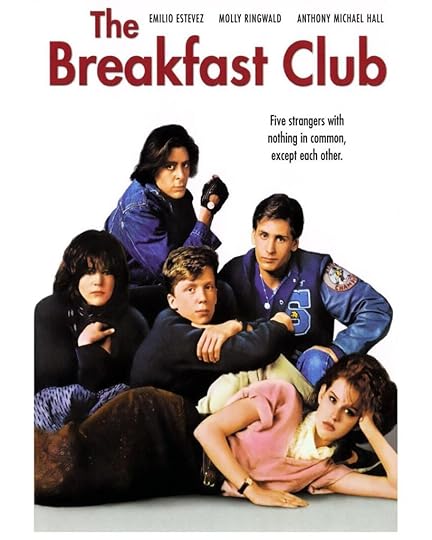
When I started watching Brats I did so with a certain sense of empathy. These were all young people who, you could argue, were sometimes harshly treated by the media (though you could argue no more than any other entertainer). Actors can be a sensitive bunch at the best of times. But that pretence wore thin very quickly. I mean, being called a brat isn’t the worst thing in the world, is it? Has McCarthy watched the news since 1985? Anyway, enraged by the injustice of it all, one by one McCarthy tracks down (most of) his old mates and asks leading questions like, “Where were you when you first heard the term Brat Pack,” and “How did it make you feel?”
Cue morose music and crocodile tears. It’s nice to see that while many admit to feeling a bit pissed off about it at the time, the majority of Brat Packers chose not to carry that burden with them and shrugged it off, refusing to be sucked into the well of self pity McCarthy seems to have been living in ever since. You get the impression most of the people he talks to are just humouring him. He hasn’t been in touch with them in decades. For most of us it would probably be the equivalent of spontaneously popping round to see someone you worked with for three weeks forty-plus years ago and haven’t seen since. Emilio Estevez seems a bit bemused by it all. By far the most insightful contribution comes from Demi Moore, who manages to contextualise the whole saga in a mature, upbeat way, and even puts a positive spin on it. There’s no denying that for a while there, everyone wanted to be in the Brat Pack. They were the epitome of cool, both on and off camera, and all got very rich very quickly. Surely there’s a lot to be thankful for. If only McCarthy’s could put his well-worn victim card away long enough to realise how truly fortunate he has been. For Heaven’s sake, the label itself is nowhere near as caustic as it once was, and is now imbued more with reverence than anything else. And another thing. This doc tries way too hard to hit the right notes. For example, a random black guy pops up just to tell us that there were very few black people in the Brat Pack films. I still don’t know who he was. There’s no in-depth discussion about it, no attempt at justification, no explanation, not even a proper introduction for the interviewee. It’s just another awkward moment.
Talking about awkward… The doc culminates in McCarthy tracking down New York journalist David Blum, the person credited with starting the whole thing when he wrote an article called “Hollywood’s Brat Pack” for New York magazine back in 1985. When McCarthy asks him if he’s sorry, or if he thinks he could or should have been ‘kinder,’ Blum is having none of it and says instead that he always thought he deserved more recognition for coining the phrase. And he’s right. Let’s be fair, he was probably paid about $200 for that article, he was just doing his job and doesn’t want to waste his time talking about it now. McCarthy needs to acknowledge that being in the public eye cuts both ways. You have to take the rough with the smooth. There’s certainly a case to be made that the whole Brat Pack thing only strengthened McCarthy’s clout and led to producers writing him bigger cheques. For a while, at least. You could argue that at the root of the ‘problem’ lies a group young actors and actresses being packaged together in big budget, zeitgeist-capturing films by savvy producers and directors looking to tap into certain audiences. What’s wrong with that? Hollywood has always done it. Worse things happen at sea, as they say.
By this point, the constant whining is getting tiresome and repetitive, and you can’t help but feel McCarthy is predisposed to this kind of behaviour. This is a man who, by his own account, had an alcohol problem at the age of 12, long before he started acting, and once wrote a book called ‘The Longest Way Home: One Man’s Quest for the Courage to Settle Down’. Groan. The signs were there. He seems like the type who would gladly point fingers at everybody else rather than accept responsibility for his own failings. Personally, I think Weekend at Bernies (1989) was more harmful to his career than some jobbing journalist calling him and his mates brats. I want to see a documentary about that.
July 20, 2024
Thank You, Goodnight: The Bon Jovi Story (Review)
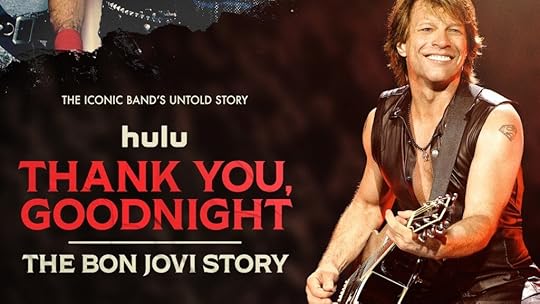
I wasn’t expecting to be rocked by this documentary. Not in the emotional sense, anyway. It turns out that too often these days rockumentaries like this get me right in the feels. I remember watching The Story of Anvil once on a long haul flight and blubbing like a baby. This long-form documentary charting the rise, fall, and sort-of rise again of New Jersey’s second favourite son (plus bandmates) manages to be both nostalgic and life-affirming, following two timelines concurrently in order to present the contrast between Jon Bon Jovi in his eighties heyday and the tired, jaded 60-something version with tired eyes and a bad throat singing to an audience of none in his living room. At times, it’s a tough watch. To be fair, I don’t think it’s supposed to be this tragic. It just is. That said, it is redeemed by a thread of positivity running through the whole thing; it’s a story of a bunch of working class kids from modest backgrounds who overcame adversity and made it big back when that still happened. It’s every teenager’s dream.
Over the course of four episodes, Jon Bon Jovi reveals himself to be a control freak, a perfectionist, a narcissist, and a chronic workaholic. He’s also a very good businessman, something he proved when he jetisoned the decidedly shady Doc McGhee and made himself manager of his own band midway through their career. He often refers to Bon Jovi (the band) as an organisation, an organisation he clearly sees himself at the top of. And rightly so. It’s even named after him. He’s very raw and real about the business side of the industry, and the sense of responsibility he feels as a performer. It’s not just about fast cars and late nights. Not any more, anyway. It must be an insane amount of pressure, and this doc paints him as a somewhat frustrated, busted up figure at times. Apparently he has some really interesting drives with Bruce Springsteen where they talk about mortality. The departure of lead guitarist Richie Sambora is covered in depth, and very diplomatically with both sides having their say, and the death of original bassist Alec Jon Such is handled with the requisite sensitivity.
You get a sense that instead of enjoying the fruits of his labour, These Days Jon Bon spends a lot of time sitting around going ‘what now?’ A lot of the time he looks a bit dazed by it all. As if he’s remembering some awesome moment in his life when his band was top of the charts and he was playing to 90,000 people at a festival somewhere and thinking WTF was that? Did that really happen? The dashing smile is gone. You get the sense that he knows it’s coming to an end, and he’s doing his best to make ‘it’ last as long as he can. One especially moving scene shows him revisiting his archives and sifting through hundreds of old-school cassettes. He has them all carefully labelled and sequenced, and he picks them up one at a time, caressing them lovingly before putting them back. In order. These cassettes represent a record of his life in a different medium. Relics of a forgotten age. There’s a lot of pretty interesting stuff about his writing process. For example, he talks about how he could never write Livin’ on a Prayer again because he’s not in that place, or headspace, any more. As you grow older, you change, and the things you write about, or the things that are meaningful to you, change accordingly. “I love that I’m still full of piss and vinegar at 61,” he says at one point. “That’s what makes me who I am. It’s my story and I work at it every day.”
This doc also shows Jon Bon’s social conscience. I’d forgotten that he volunteers in local soup kitchens and does a lot for charities. Not to diss the guy, but it does come across as a bit contrived at times. Like a politician doing a hospital visit. Roll those cameras! Even so, he seems like a genuinely nice bloke. He just wants to make a positive difference, and he wants people to like and respect him. He wants to be a role model and set an example, which is admirable in itself. His heart’s in the right place. That said, you can see he might be a bit of an egomaniac sometimes. If you were mates and he wasn’t rich and famous, he’d be that dude you’re only able to handle in small doses before they do your head in and you run to the hills. You’re mum would probably love him, though. But why shouldn’t he be a bit full of himself? He’s a fucking rock star.
July 13, 2024
RetView #80 – King of Zombies (1941)
Title: King of Zombies
Year of Release: 1941
Director: Jean Yarbrough
Length: 68 mins
Starring: Dick Purcell, Joan Woodberry, Mantan Moreland, Henry Victor, John Archer
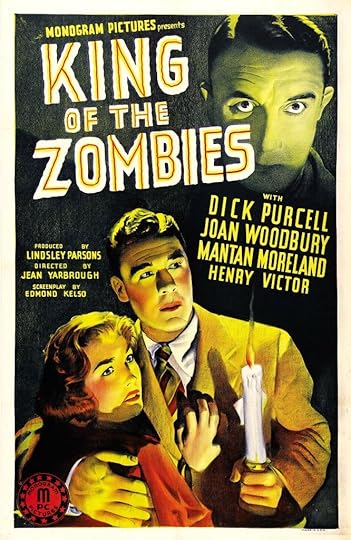
This B-movie starts off with three men in a cargo plane en route to Puerto Rico attempting a crash landing on a secluded island in the middle of the ocean because they got lost. Even in the 1940s, that premise must be considered questionable. Anyway, plane safely crashed in a graveyard (how’s your luck?) the three men, all remarkably unharmed and unshaken despite their ordeal, set about finding a way out of their predicament. Within about 15 seconds they stumble upon a creepy old mansion owned by a Dr. Miklos Sangre (Victor) and his rather subdued wife. Remarkably, he isn’t the least bit surprised to see them and doesn’t bother asking too many questions. At this point, one of the three, a servant (yes, it’s problematic) by the name of Jeff (Moreland) implores the group to leave. But of course everybody ignores him and sends him off to the servant’s quarters where he soon starts making friends. He also meets some zombies. But don’t worry, these are the more traditional kind of ‘reanimated corpse used for cheap labour’ variety of living dead so they aren’t into chasing people around and eating brains. Not at first, anyway.
Meanwhile, the trio (now reduced to a duo) guess something might be amiss with the spooky old mansion, but ignore any misgivings and whip the brandy out instead. As you do. When Jeff tries to warn them about the zombies they ridicule him, mainly on account of his skin colour, you feel. Stupid white people. Jeff actually turns out to be right. Plus, he also has all the best lines (“Did I hear anything? No. Just the sound of my heart trying to jump out of my chest!”). When the group eventually pluck up the courage to go exploring, one of them contracts ‘jungle fever’ and ends up dead and buried. But not for long, obvs. They then find Dr. Sangre conducting a voodoo ritual in the cellar with a veritable army of the undead. Given that this film was released in the middle of World War Two, it wouldn’t feel complete without some war references, and it soon transpires that not only is Dr. Sangre a madman up to his nuts in zombies and black magic, but he’s a gosh darn spy as well! Could he BE any more evil? That said, though there are a few hints throughout the movie, the film makers are extremely careful not to explicitly say the doctor is German. Instead, the plot refers to him as “A secret agent for a European government” and encourages the audience to draw their own conclusions, which they inevitably do.
King of Zombies supposedly started out as a straight horror film, but when the Bob Hope vehicle The Ghost Breakers (1940) became a big hit for Paramount, changes were made, which included replacing the original director with Yarbrough, who was more known for his comedies. He would go on to direct such genre staples as House of Horrors (1946), The Creeper (1948) and Lost in Alaska (1952) with legendary comedy duo Abbot and Costello. King of Zombies is one of the very few horror movies to be nominated for an Academy Award for best music (Music Score of a Dramatic Picture). The composer Edward Kay worked on over 340 films from the 1930s into the 1960s, and was actually nominated for Academy Awards on multiple occasions but never won. In 1943, it was followed by a sequel (of sorts) called Revenge of the Zombies that featured two of the original cast members. Mantan Moreland reprised his role as Jeff and Madame Sul-Te-Wan was cast as Mammy Beulah, the housekeeper.
In a contemporary review, website Basement Rejects, notes: “Like a lot of the films at a time, most of the movie relies on xenophobia and the strangeness of different cultures. This is combined with a number of jokes surrounding the Black valet who is the only one who completely believes in the zombies that are ‘haunting’ the island.” 100 Misspent Hours were much less complementary in saying: “What we’ve got here is an agonizingly unfunny, racist horror comedy with no redeeming features beyond its extreme brevity and the rare witty one-line.”
My personal opinion is somewhere in between. Despite the sometimes questionable cultural references, King of Zombies is actually a pretty decent comedy horror. The dialogue is sharp and witty, and the pacing moves things along quickly. There aren’t many dull moments. Perhaps best of all, like many movies of the era, it’s a fast watch and readily available to watch for free online.
Trivia Corner
The role of Dr. Victor Sangre was originally meant for genre heavyweight Bela Lugosi. When he became unavailable, negotiations ensued to obtain Peter Lorre for the part, but a deal could not be reached. Veteran character actor Henry Victor, who was born in England but grew up in Germany was signed just in time. Sadly, he died from a brain tumour in March 1945 at the age of 52.
June 15, 2024
Handmade Horror Stories – Second Edition
I’m pleased to announce my gruesome little short Misshapes & Rejects has been reprinted in the revised second edition of Handmade Horror Stories: An Anthology of art and craft-themed short horror fiction on Frost Zone Press. It even comes with a new cover!
“From quiet horrors to chilling nightmares, this anthology gives new meaning to be creative!“

The new version of Handmade Horror Stories is out now.
June 2, 2024
X6 is out now!
X6 is the latest collection of short fiction from the author of Sker House and The Wretched Bones, featuring ten terrifying and thought-provoking tales taken from the pages of 34 Orchard, Every Day Fiction, The Quiet Reader, and the genre-defining anthologies Handmade Horror, Welcome to the Splatterclub, Brewtality, and Burnt Fur, among others.
Meet the young lovers forced into a suicide pact, the bar worker who thinks he has been serving a ghost, and the traveller haunted by a child’s chilling cries. Along the way witness a Tinder date go all kinds of wrong, an urban legend spring to life, and a hardcore drinker find a foreign object in his beer can, which is only the start of his problems.
Also includes author’s notes and exclusive cover art by Bram Stoker Award-nominated artist Greg Chapman.
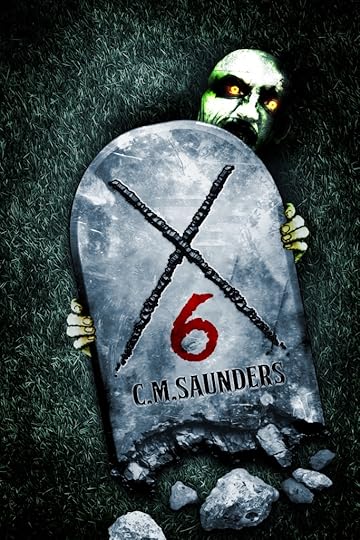
May 23, 2024
Retview #79 – Island of Terror (1966)
RetView #79
Title: Island of Terror
Year of Release: 1966
Director: Terence Fisher
Length: 89 mins
Starring: Peter Cushing, Edward Judd, Carole Gray, Eddie Byrne, Sam Kydd
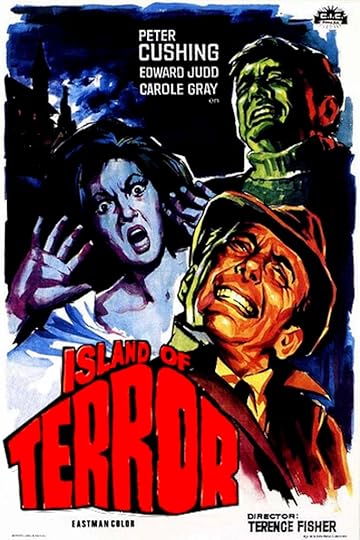
Something monumental happened within the English cultural landscape in the summer of 1966. Something that would send shockwaves far and wide, and leave a lasting mark for generations to come. Something for people to aspire to. Yep, that’s right, Island of Terror was released. Directed by British horror legend Terence Fisher of Curse of Frankenstein (1957), The Gorgon (1964) and Hound of the Baskervilles (1969) fame, Island of Terror was based on an original story by Edward Mann and Al Ramsen. It was distributed by Planet Film in the UK and Universal Studios in the US as a double bill with The Projected Man (1967).
On a remote Island off the coast of Ireland, a farmer’s wife contacts the authorities claiming her husband has gone missing. He soon turns up in a cave, dead, without a single bone left in his body. What the eff has happened ‘ere? Local copper John Harris (Kydd) doesn’t have a scooby and calls the local doctor (Byrne). He too is clueless, so travels to the mainland in search of answers and eventually hooks up with ‘noted London pathologist,’ Dr Brian Stanley (Cushing). He too is unable to work out what might have happened (can you see a theme developing?) so they seek out Dr David West (Judd), an expert on bones and bone diseases. Although the mismatched duo interrupt West’s quiet evening at home with his rich lover Toni Merrill (Gray), he is evidently more interested in bones and stuff so the whole gang promptly decamps back to the island in Merrill’s dad’s helicopter, which was handy. Once there, they soon discover a castle laboratory and upon inspection find the occupants all dead and boneless. This prompts our intrepid band of heroes and heroines to hypothesise, not unreasonably, that whatever is going around killing folk and turning their bones to mush probably began life in the lab, possibly as the result of an experiment gone wrong.
Some notes they find written by a Doctor Landers (I know, I know, too many doctors) confirm as much, and hint that in a quest to find a cure for cancer, the lab’s head honcho may have accidentally created a new lifeform that was especially partial to bones. And what’s worse, the lifeform (or lifeforms) might still be there. These amorphous grey creatures are nicknamed “Silicates” by Dr. Brian and Dr David, and kill their victims by injecting a bone-dissolving enzyme into their bodies. The Silicates are incredibly difficult to kill, as the luckless Doc Landers learns when he has a rush of blood and attacks one with an axe, and multiply every six hours. It’s unclear how. Regardless, the group estimate that if the multiplication is allowed to continue for a week there would be a million of them. At one point, we actually see this multiplication happening. After making some farty noises, one of the creatures splits open and some tinned spaghetti spills out, prompting Dr. Brian to yell, “They are multiplying!”
Dr. Brian, Dr David and the rich girl then mobilise the islanders, and with the help of the island ‘leader’ and the bloke from the shop (which just happens to sell dynamite), declare war on the silicates and attack them with everything they can find, not much of which is very effective. They shoot one a few times and all it does is wave its tentacle menacingly, moving Stanley to say, “Nasty little creatures, aren’t they?” During an epic battle scene, a silicate drops out of a tree onto a dude chucking petrol bombs at them. We aren’t told how the silicate managed to climb the tree with no arms. Speaking of no arms, after he has a brief encounter with a silicate, Dr David lops off Dr Brian’s arm and minutes later asks him how his arm is.
Like, what arm? You chopped it off, you daft bassard.
Anyway, when one of the ‘nasty creatures’ is found dead, apparently after accidentally ingesting radiation from the lab, the gang realise they must find more of the stuff and figure out how to contaminate the remaining silicates before it’s too late. Long story short, they eventually succeed, of course they do, but an epilogue reveals a visit to a satellite programme in Japan, where technicians are duplicating the work that spawned the silicates with predictably unfunny results. It may have been 1966, but let’s hope they didn’t want to come home. That’s the last football reference, I promise.
Brian J Dillard writing for Online database Allmovie gave the film a generally positive review, saying: “This creepy yet clunky sci-fi-horror flick boasts one of the coolest monsters ever to grace the silver screen – radioactive silicone beings that suck the calcium right out of your bones. A Saturday-afternoon creature-feature favorite, Island of Terror also boasts one of the most memorable amputation scenes ever.” Meanwhile, TV Guide awarded the film two out of four stars, criticizing its “shaky plot” but commending Cushing’s performance and Fisher’s direction. Radio Times also gave the film two stars and called it “Long on logic but high on hysteria,” whatever that means. All good fun. You can watch Island of Terror RIGHT HERE for nuffink!
Trivia Corner
Terence Fisher directed Peter Cushing (who plays Dr Brian Stanley) in a total of 13 films, including the last offering before he died in 1980 at the age of 76, Frankenstein and the Monster from Hell (1974).
May 8, 2024
Bruce Springsteen & the E Street Band @ Principality Stadium, Cardiff, 5 May 2024
So here we are. The opening night of the 2024 Bruce Springsteen & the E Street Band European Tour which, in effect, began in February last year before being derailed by Bruce’s stomach ulcer. I had to travel to Birmingham to see it then. At least this gig is closer to home. Bruce took a lot of heat for that tour. And not just because of the Ticketmaster fiasco. A lot of diehard fans complained about the static setlist and the slightly maudlin mood. It may not have changed much from night to night, but to be fair it was a cracking set and if I had to sit down and write one of my own, it wouldn’t be far off that. Some of that criticism must have stung Bruce, because here it seemed as if he were begrudgingly trying to give everyone everything they wanted at the same time. There were rarities galore and a more generally upbeat tone. Gone are the long jazzy improv sessions, giving way to a litany of more leaner and muscular crowd pleasers. This felt like a band giving it everything in one last power drive.
Despite a few cursory yells of “Cardiff!” there was very little interaction with the crowd in the opening stages, which was a bit unusual for Bruce. Instead, he let the music do the talking dug deep in a bid to prove the naysayers wrong. The opening track, always a point of discussion between Bruce fans, was So Young and in Love, a sax-heavy, sixties-enthused deep cut that first appeared on his 1998 compilation Tracks, though the song itself is much older than that. My guess is this slot will be regularly occupied by something random. Or he might do it just often enough that when he does start shows with something more conventional, that’ll be a surprise in itself. Springsteen has a history of doing this, often busting out covers that have a connection to the place he is playing. I remember seeing him open a London gig once with London Calling by the Clash, and he sometimes plays INXS songs in Australia. Word is he has been rehearsing an old rogues tune, which might be significant given he is scheduled to play a few gigs in Ireland soon. It’s attention to detail like this which makes each gig more of an experience for the fans. Though I have no idea what So Young and in love has with Wales. I live in hope of seeing him play an alarm song in Wales.
Lonesome Day, No Surrender, Prove it all night, The Promised Land, and Darlington County all followed in quick succession with barely a pause for breath. It was exhilarating. Then came Ghosts from his 2020 album Letter to You, one of his best tunes in years which sits easily among the older, more established material. In fact, that whole album is a banger. A definite late-career return to form. Another lurch to leftfield came in the form of nineties relic Better Days, played as a result of a sign request. With such an expansive back catalogue to choose from, as well as the likelihood of the odd cover version, I can’t see that song getting too many more outings on this tour. Presumably the bulk of the set will remain unchanged but Bruce will slot these little oddities around it to spice things up. This undoubtedly won’t please everyone, but it seems the most sensible approach.

It was exhausting just watching this. Just shy of three hours might not sound like much, but remember the dude is almost 75 years old. It’s all made more taxing by the emotional investment demanded of the crowd. It’s pretty intense, especially in the middle of the set which included My City of Ruins, The River, a cover of the Commodores’ Night Shift from his most recent album Only the Strong Survive, and a rare If I was The Priest, culminating with a rumination on absent friends and being the last surviving member of his first band in the introduction to Last Man standing. Some moments do seem a bit contrived and, dare I say, overdramatic, but Bruce is an entertainer, and he does his job well. I absolutely love the segue from Wrecking Ball through The Rising and into Badlands, leading into a rousing Thunder Road. The energy levels barely drop a notch.
With this show, he takes you on a journey. It’s not always an easy road to travel. There will be both sadness and joy, elation and devastation. With all kinds of sentimental swerves depending on the little tweaks Bruce makes along the way. A Bruce show is a microcosm of life. There’s a lot of regret, something probably most humans are dealing with to some extent. Its relatable. If you’ve been following Bruce for any length of time, and most of the at his gigs have, you form unique bonds and attachments to these songs. They might remind you of certain people, times, or places. Lonesome day, for example, take me back to a breakup I had 20-years ago. Badlands brings back the feeling of being a rambunctious teenager who thought he knew it all. The River, for some reason, brings back memories of a trip to see the Boss in Rotterdam a lifetime ago where I got robbed in a cafe and strip searched by French border police. Even the obscure opener blasted me with memories because Tracks was such a seminal release for me that I remember where and when I bought it and by extension who I was going out with at the time.
The joy was compounded about two thirds through when Bruce turned the house lights on, another long-standing tradition, and ran through a thrilling life affirming sort-of extended encore (I say sort-of extended encore because I don’t actually remember them ever leaving the stage) of Dancing in the Dark, Born in the USA, Born to Run, Bobby Jean and Tenth Avenue Freeze Out. By then you felt like this was your reward at the end of that long, difficult journey. These songs mean different things to different people, like a hidden language only you and maybe the Boss himself, can understand. Well, not even he understands it. He doesn’t even know you exist. It’s just you. But as pathetic as that might sound, at least we found a shred of meaning in this fucked up world and for that alone we should be grateful. This, I recently worked out, is the same kind of deeply personal relationship some overly-religious people say they have with Jesus. And others have with Taylor Swift who, incidentally, is playing this very venue next month. Each to their own, I guess. I don’t think its an accident that in later years Bruce has inserted more religious references and imagery in his shows, almost like he us taking on the role of preacher. Or cult leader. There’s a reason so many fans (and sometimes reviewers) liken seeing the Boss in concert to a religious experience.
Maybe we are all looking for some kind of connection, and in an increasingly isolated and segregated world where we seem to have less and less all the time, we find it in places like this. Being part of the fan community helps you meet like minded people and have conversations that not many other people would find stimulating. We get it. We all understand. This journey we are on together is another chapter in the book of our life, and because of Bruce we are all here together at this precise moment in time. It’s all fine and dandy being a lone wolf, but even wolves know there is safety in numbers sometimes. Whatever helps us all get through the day and make it to the next milestone. I very much doubt we will ever see the E Street Band as a live force at the conclusion of this extended tour, but I said that last time.
That reminds me of a meme I saw recently. The earth is billions of years old, and you are lucky enough to be on it the same time as Bruce Springsteen.
Hallelujah!



